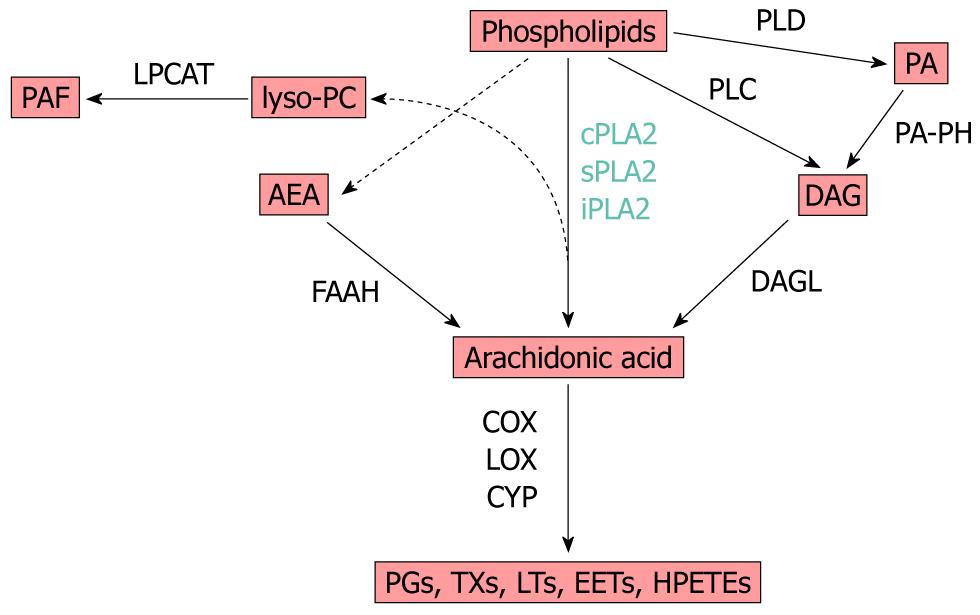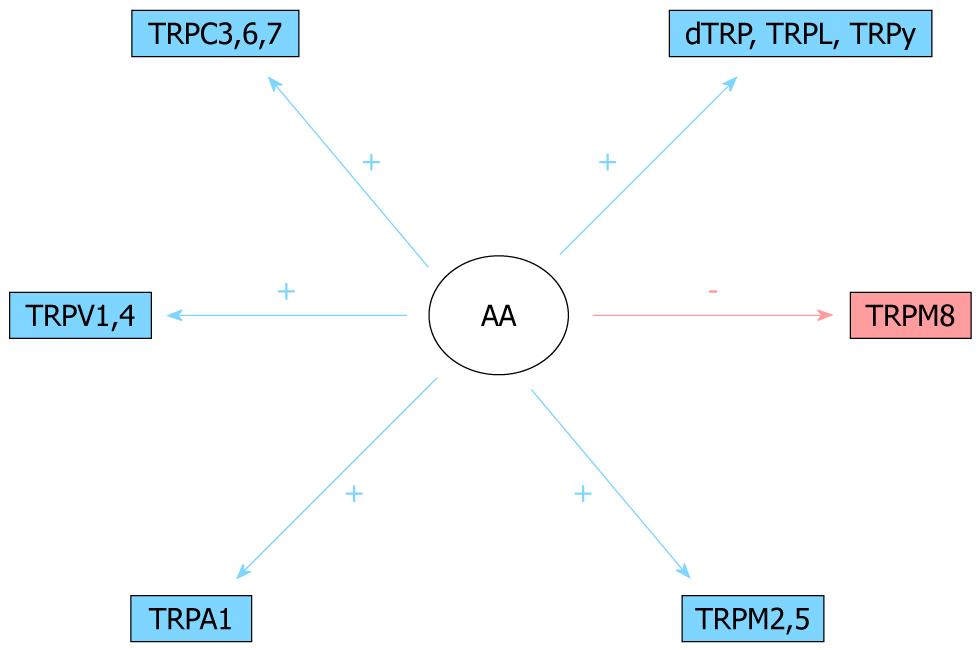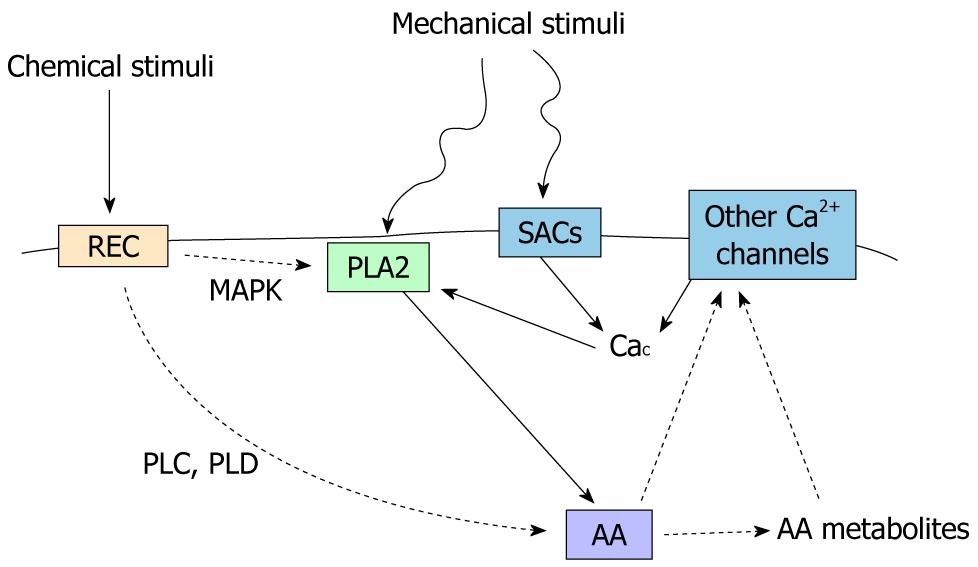Copyright
©2011 Baishideng Publishing Group Co.
World J Biol Chem. Apr 26, 2011; 2(4): 59-66
Published online Apr 26, 2011. doi: 10.4331/wjbc.v2.i4.59
Published online Apr 26, 2011. doi: 10.4331/wjbc.v2.i4.59
Figure 1 Simplified scheme showing arachidonic acid metabolism.
COX: Cyclooxygenase; LOX: Lipoxygenase; CYP: Cytochrome P450 epoxygenase; PGs: Prostaglandins; TXs: Thromboxanes; LTs: Leukotrienes; EETs: Epoxyeicosatrienoic acids; HPETEs: Hydroperoxyeicosatetraenoic acids; DAG: Diacylglycerol; DAGL: DAG lipase; PA: Phosphatidic acid; PLD: Phospholipase D; sPLA2: Secretory phospholipase A2; cPLA2: Cytosolic phospholipase A2; iPLA2: Ca2+-independent phospholipase A2; PLC: Phospholipase C; PA-PH: Phosphatidic acid phosphatase; lyso-PC: Lysophosphatidylcoline; PAF: Platelet activating factor; LPCAT: LPC acetyltransferase; AEA: Arachidonoylethanolamide (anandamide); FAAH: Fatty acid amidohydrolase.
Figure 2 Scheme showing transient receptor potential channels modulated by arachidonic acid and its metabolites.
AA: Arachidonic acid.
Figure 3 Simplified scheme showing the interplay between mechanical stimuli, arachidonic acid metabolism and calcium signaling.
AA: Arachidonic acid; REC: Membrane receptors; SACs: Stretch activated calcium channels; PLD: Phospholipase D; PLC: Phospholipase C; MAPK: Mitogen-activated protein kinase; Cac: Ca2+ concentration; PLA2: Phospholipase A2.
- Citation: Munaron L. Shuffling the cards in signal transduction: Calcium, arachidonic acid and mechanosensitivity. World J Biol Chem 2011; 2(4): 59-66
- URL: https://www.wjgnet.com/1949-8454/full/v2/i4/59.htm
- DOI: https://dx.doi.org/10.4331/wjbc.v2.i4.59











